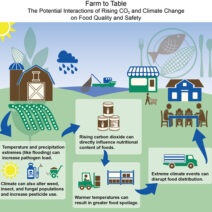The climate in Ireland is often encapsulated by the phrase “green hills and grey skies.” This succinctly describes the verdant landscape that epitomizes the Emerald Isle, as well as the often overcast and rainy weather that prevails. Understanding the nuances of this climate is essential for appreciating not only the country’s natural beauty but also its agricultural practices, biodiversity, and the socio-cultural implications of weather on the lives of its inhabitants.
The Irish climate is classified as a temperate maritime climate, often characterized by mild winters and cool summers. The ocean greatly influences Ireland’s weather patterns, as it is surrounded by the Atlantic Ocean, which modulates temperatures, preventing extremes. The average annual temperature hovers around 10 degrees Celsius (50 degrees Fahrenheit), with summer temperatures ranging between 15 to 20 degrees Celsius (59 to 68 degrees Fahrenheit) and winter averages dropping to approximately 4 to 9 degrees Celsius (39 to 48 degrees Fahrenheit).
Precipitation is a hallmark of the Irish climate, with rainfall occurring throughout the year. The west of Ireland, particularly along the coast, is considerably wetter than the east. Regions like County Kerry and Connemara can receive upwards of 3,000 millimeters (118 inches) of rain annually, while eastern areas such as Dublin encounter a more moderate figure of around 750 millimeters (30 inches). This variability not only shapes the Irish landscape but also influences the biodiversity within its ecosystems.
From an ecological standpoint, the abundant rainfall contributes to the lush greenery for which Ireland is famed. The landscape is punctuated by vibrant fields, rolling hills, and shimmering lakes, all relying on this moisture-rich climate. Pastures thrive, making Ireland an ideal locale for livestock farming. Dairy farming, in particular, has flourished, creating a robust agricultural identity that underscores the country’s economic stability. Yet, the environmental impact of such agricultural practices, especially concerning greenhouse gas emissions, necessitates scrutiny.
The interplay between Ireland’s climate and its unique ecosystems presents a fascinating tapestry of biodiversity. The varied topography—from the rugged mountains of the northwest to the flat plains of the midlands—presents an array of habitats that support diverse flora and fauna. However, the effects of climate change are increasingly becoming evident in Ireland. Rising global temperatures, shifting rainfall patterns, and the increased frequency of extreme weather events threaten these delicate ecosystems.
One cannot discuss the climate of Ireland without acknowledging the crucial role that its weather plays in shaping the Irish culture and lifestyle. The concept of “craic,” which refers to fun, entertainment, and a good time, often finds its roots in community gatherings, characterized by warm hospitality, especially in the face of abundant rain. The weather may compel the Irish to find enjoyment indoors, fostering creativity in art, music, and literature. This adaptability is an integral facet of Irish identity, reflecting a resilience that resonates with the landscape itself.
The grey skies of Ireland should be viewed not solely as an inconvenience but as vital elements of the climate that shape the island. With overcast conditions, the quality of light gives rise to unique photographic moments, enhancing the natural beauty of the landscape. Artists and photographers often find inspiration amid the intermittent sunshine and sudden showers, creating striking contrasts that contribute to the iconic imagery associated with Ireland.
Interestingly, the darker, moister conditions have also contributed to the prevalence of unique plant species, including the revered Irish moss and vibrant ferns. These organisms contribute not only to visual splendor but also to the historical tapestry of indigenous healing practices – a testament to the interconnectedness of culture and climate.
As climate change takes its toll, the promise of a future where Irish agriculture can flourish within an updated paradigm becomes evident. Sustainable farming practices, agroforestry, and reforestation initiatives are now at the forefront of discussions about combatting climate change effects. These efforts aim to enhance resiliency against the challenges posed by erratic weather patterns while preserving the country’s verdant aesthetic.
In recent years, Ireland has pledged to strengthen its approach to environmental sustainability. The government’s commitment to achieving carbon neutrality by 2050 illustrates an acknowledgment of the intimate relationship between climate policy and the very essence of Irish culture and landscape. This shift signals a broader understanding of what it means to inhabit a space marked by natural beauty and ecological vulnerability.
In conclusion, Ireland’s climate, characterized by “green hills and grey skies,” invites curiosity and an appreciation for its complex interplay of weather, ecology, and culture. It leads one to ponder the delicate balance between an idyllic landscape and the realities of a changing climate. The hope remains that, armed with knowledge and a renewed commitment to preserving its environment, Ireland can continue to thrive, maintaining the wondrous landscapes that have inspired generations.






